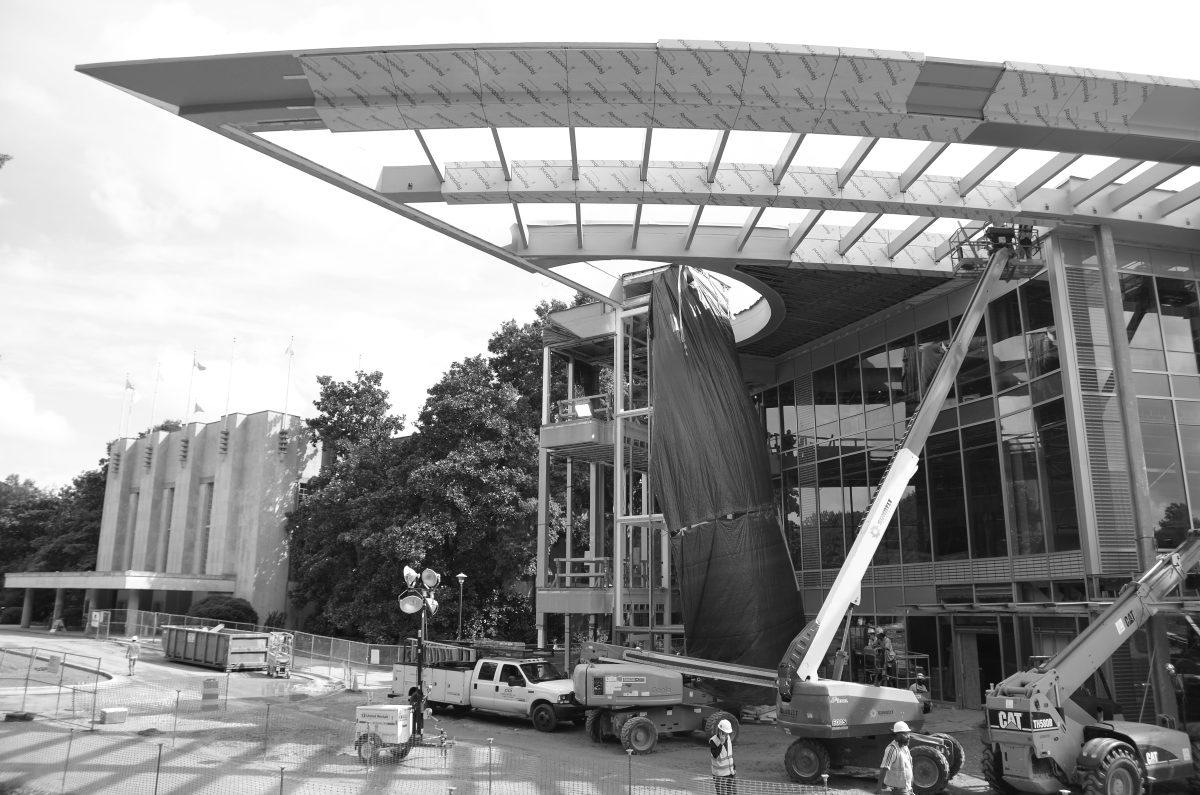As Talley construction continues, University Sustainability Office Green Development Coordinator Liz Bowen said the University is taking great measures to make sure the buildings are sustainable and safe for the environment.
“Whenever a new building is proposed, the first question is always ‘Do we need it?’” Bowen said. “It’s not a simple yes or no question, we’re going to look and make sure we actually need it.”
In 2008, N.C. State committed to the President’s Climate Commitment, which requires the University to develop a climate action plan. In order to meet the requirements of the Commitment, all buildings larger than 20,000 gross square feet had to earn a Leadership in Energy and Environmental Design Silver Award or higher from the U.S. Green Building Council.
According to Bowen, Talley has been a successful project for N.C. State’s Sustainability Office because Talley is a renovated building and does not require as many resources to build.
“Talley is an addition and a renovation,” Bowen said. “Renovations are the most sustainable projects, and if you have to build, you have to build sustainably.”
Park Shops and Hunt Library are both renovations as well. In 2009, Park Shops had its windows replaced and the exterior building envelope was improved. Its bricks and interior walls were maintained, but Port City Java was added which gave the building a mixed use for classrooms and community space.
The Construction Activity Pollution Prevention is a pre-requisite that all LEED projects must follow and requires an erosion control plan. According to Bowen, the erosion control plan proved useful due to all the rain Raleigh had this year.
“N.C. State Environmental Health and Safety is very proactive in making sure that storm water management at building sites meets or exceeds N.C. Sedimentation and Erosion Control Law,” Bowen said. “All over campus, we are taking real steps to minimize erosion and storm water impacts, like installing cisterns, bioswales and rain gardens. We had very strange weather this year and it’s really prompted us to be even more proactive in this area.”
A cistern is a tank connected to gutters that holds rainwater. Cisterns reduce the amount of water leaving a site, causing less erosion, and they also store the rainwater so it can be reused for plumbing or irrigation.
Bioswales are ditch-like depressions in the ground, filled with plants that withstand floods and droughts. Similar to rain gardens, bioswales reduce the amount of erosion on a site by containing and infiltrating the water.
Another criterion of the LEED Silver Award is reducing the heat island effect, which warms urban areas during construction. Bowen said that buildings with white roofs and vegetative green roofs reflect light and heat which help to mitigate the heat island effect.
The LEED Silver Award also has areas based on reducing toxins in the air, which Bowen said is being achieved through careful selection of the cleaners and paints used across campus.
“One thing that we kind of take for granted now, but has a big impact on human health is our green housekeeping program,” Bowen said. “University housekeeping cleans millions of square feet every day. They only use non-toxic cleaners, so that is a huge toxin reduction.”
According to Bowen, paints used in all projects are low-volatile organic compound paints, which are better for indoor air quality, and human and environmental health.
“You know that new paint smell?” Bowen said. “You’ll notice an absence of that in our new buildings because we only use paint that has very, very little VOC, which are volatile organic compounds.”
For buildings that are fewer than 20,000 gross square feet, N.C. State evaluates sustainability using a “Green Building Checklist” which is similar to the LEED guidelines.
“Erosion is minimized and water and energy-efficiency improvements are incorporated as much as possible,” Bowen said. “These efforts reduce the short- and long-term environmental impacts of campus buildings.”
Bowen said that by 2015, the University wants to have its water consumption reduced by 20 percent.
“We also are looking into net zero, which is where a building does not consume more energy than it produces in one year,” Bowen said.
By 2050, N.C. State wants to reach climate neutrality, which means the University will remove as much carbon dioxide as it emits into the atmosphere.
“By applying innovations that increase occupant health and well-being while reducing the environmental footprint of campus, N.C. State models environmental, social and economic sustainability in the local and global community,” Bowen said. “We welcome student, faculty and staff ideas on improving our campus infrastructure while protecting the environment.”








